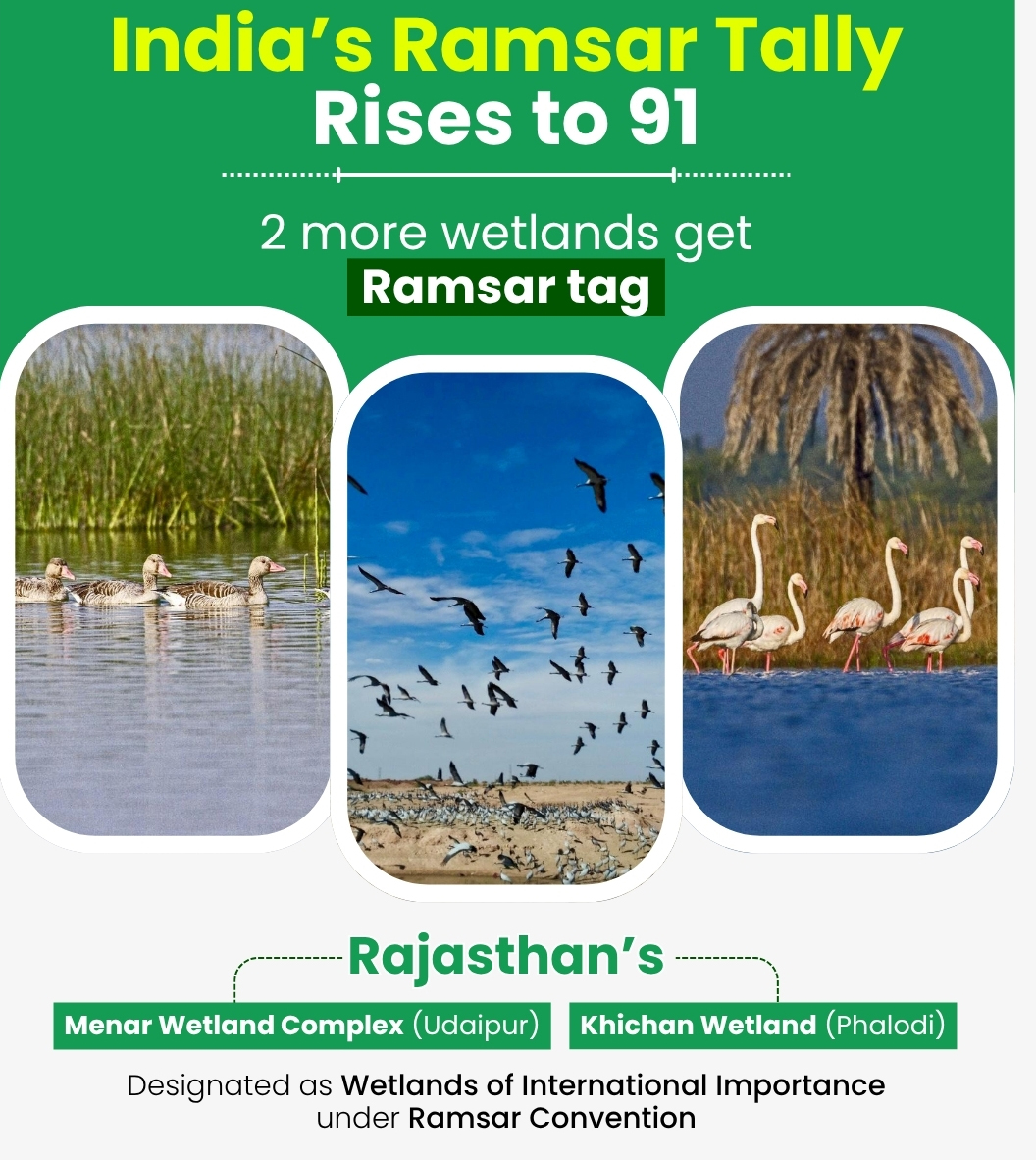Context:
On World Environment Day, India added two new wetlands to its growing list of internationally recognized conservation areas under the Ramsar Convention. The newly designated Ramsar sites include Menar Wetland Complex in Udaipur and Khichan Wetland in Phalodi. This addition elevates the country’s tally of wetlands of international importance to 91.
About Ramsar Convention:
The Ramsar Convention, signed in 1971 in Ramsar, Iran, is an intergovernmental treaty aimed at the conservation and sustainable use of wetlands. Wetlands recognized under this treaty are known as Ramsar sites or wetlands of international importance.
According to the Convention, wetlands are broadly defined as:
“Areas of marsh, fen, peatland or water, whether natural or artificial, permanent or temporary, with water that is static or flowing, fresh, brackish or salt... including areas of marine water the depth of which at low tide does not exceed six metres.”
Wetlands designated under the Ramsar Convention must meet one or more of nine criteria, such as:
- Representing rare or unique wetland types
- Supporting vulnerable, endangered, or critically endangered species
- Providing refuge for migratory birds and fish populations
About Menar Wetland Complex:
Situated in southern Rajasthan, the Menar Wetland Complex consists of three main ponds — Braham Talab, Dhand Talab, and Kheroda Talab — interconnected through agricultural land that floods during the monsoon. This seasonal flooding transforms farmlands into vibrant habitats, supporting:
- 110 species of waterbirds, including 67 migratory species
- Notable birds such as the critically endangered white-rumped vulture and long-billed vulture
About Khichan Wetland:
Located in the northern Thar Desert, the Khichan Wetland includes two main water bodies — Ratri Nadi and Vijaysagar Talab — along with riparian zones and scrubland. This arid landscape is uniquely adapted to host:
- Over 150 bird species, many of which are migratory
- Massive wintering flocks of demoiselle cranes, with numbers exceeding 22,000 individuals annually
Global and Asian Ranking:
Global Ranking: India(91) is ranked third globally, after the United Kingdom (176 sites) and Mexico (144 sites).
Asian Leadership: India leads Asia in the number of Ramsar sites.
Importance of Wetlands:
Wetlands are essential ecosystems that provide numerous benefits, including :
- Biodiversity Conservation: Wetlands support diverse flora and fauna, and provide habitats for migratory birds.
- Flood Control: Wetlands help regulate water flows, preventing floods and maintaining water quality.
- Water Resources: Wetlands are a vital source of freshwater, supporting human consumption, agriculture, and industry.
- Habitat for Migratory Birds: Wetlands provide crucial habitats for migratory birds, supporting their survival and migration patterns.
Conclusion:
India’s expanding Ramsar wetland count reflects its dedication to ecological sustainability. The recent additions underscore the importance of ongoing conservation initiatives, ensuring the protection of these critical ecosystems for future generations.







